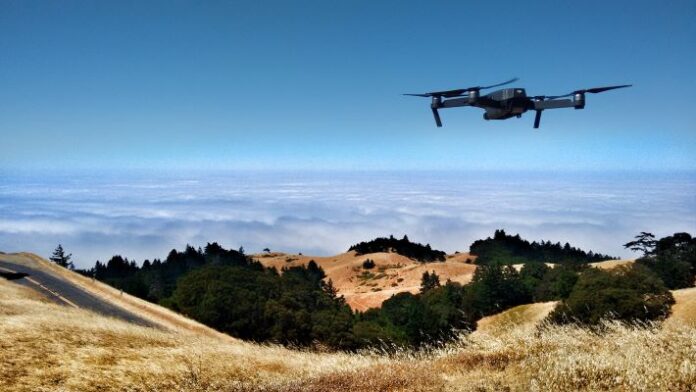Harsh conditions and extensive labor requirements might challenge Africa’s agriculture sector, but drones may be the solution. They’re capable of a broad range of functions that can increase farm productivity, ultimately resulting in increased yields and streamlined practices.
Why Do Farmers Use Drones?
Farmers use drones because it improves how well they can care for their fields. Since many places in Africa face harsh weather and crop disease, they need a solution capable of predicting changes and helping them with related tasks. For example, after experiencing increasing heat and droughts, the Tunisian government partnered with the African Development Bank and the Korea-Africa Economic Fund in 2018 to support more drone usage in agriculture.
When faced with lower crop yields and challenging conditions, it’s necessary to increase productivity. Remotely operated vehicles allow for efficient farm and aquaculture supervision, saving time and money in the process.
How Do Farmers Use Drones?
While the technology is still relatively new, many people already use drones in African agriculture to some extent. There are even companies that provide the devices, so farmers have reliable ways to get their hands on them. For example, Integrated Aerial Precision is an agricultural drone service providing unmanned aerial vehicles to improve productivity and crop yields. They offer the devices to help farmers monitor their fields and carry out various farming practices.
Organizations have even teamed up with smallholder farmers to support them. For example, a partnership between an international nonprofit and a Ugandan seed company to use drones in agriculture resulted in an additional $580,000 profit for farmers and $4.2 million for the seed company. After mapping the fields with drones, they used the collected data to inform their decisions about their farming practices.
Some Africans are also working individually to increase drone usage. For example, a Nigerian man known as the “flying farmer” used his decade of experience in the Agricultural industry and his knowledge of technology to use drones for farming practices. He believes they increase food security and make farming more sustainable, and he works to educate others on their potential.
What are the Challenges of Drone Use?
Although drones are very beneficial to the agricultural industry, it’s not always feasible to use them. Barriers like regulation, cost and the learning curve may prevent smallholder farmers from using them.
There are three main challenges facing drone use in African agriculture:
- Regulation: While many in the agriculture industry see the benefit of using drones, it’s still a relatively new practice — regulations haven’t caught up yet. Around 26% of African countries limit their usage to specific areas, preventing farmers from using them to their full extent.
- Cost: Many farmers face a financial barrier to drone use because the initial cost of a model is high. In addition, only those knowledgeable enough can do maintenance and repairs, which adds to long-term expenses.
- Capabilities: While most drones are simple to operate because they’re built for ease of use, there’s still a learning curve. Many farmers may need help to know how to properly and efficiently use their devices.
These three challenges don’t affect all farmers but are still significant. The barriers against widespread drone use in African agriculture limit farmers’ capabilities, which reduces their efficiency. Updated laws and increased access to the devices could improve their productivity.
How Do Drones Increase Productivity?
Since drones can automate or streamline many farming practices, they can easily increase productivity. They’re very versatile devices, so farmers can tailor them to their farms’ needs. In addition, they’re typically small and can travel long distances, allowing them to drastically reduce the time it takes to carry out certain jobs.
Agricultural Applications for Drones
The main agricultural applications for drones include atmosphere tracking, crop monitoring, precision farming and land mapping. They can carry out basic farming practices or use built-in features to survey and collect field data.
1. Atmosphere Tracking
Since drones can collect atmospheric information, farmers can use them to track the weather and better anticipate changes. The data is more complex than a simple weather report, so it informs them more accurately. For example, it lets them know the optimal time for planting, harvesting or fertilizing. When they know how the weather will change, they can better anticipate what they’ll need to do to care for their crops and when they’ll have to do it, making them more productive.
2. Crop Inspection
Real-time crop inspection is one of the primary features of an agricultural drone. It can travel significant distances and use a variety of sensors to monitor fields, which lets farmers accurately estimate their crops’ health and yields. The devices can also identify issues that may not be visible to farmers, like signs of pests or disease.
When they have access to such information, they can make better decisions and streamline their process. For example, they could track their crop health to know the best time to water, saving them time and resources. It can save them a lot of time because they can monitor everything remotely instead of manually inspecting each crop. They can also be more productive when all of their practices are data-driven.
3. Precision Farming
Farmers can equip drones with a variety of tools to allow the drone to carry out tasks for them. For example, they’re capable of precision spraying pesticides, which reduces waste and helps with crop health. It significantly reduces the time it takes to complete routine duties, resulting in a more productive farm.
4. Land Mapping
Drones can gather information when farmers deploy them for aerial mapping. Since only 10% of rural African land is mapped and documented, it’s challenging for many farmers to accurately know the extent of their fields. Drones can calculate the area of their fields. In addition, they can accurately measure the boundaries of farms, which can help with insurance-related issues.
Accurate land mapping helps farmers assess their fields better and gives them a better idea of their inventory and potential yield. When they have a better idea of the extent of their land, they can take care of it more effectively, which increases how productive they are.
Drones Can Increase Farm Productivity
There is a broad range of practices drones can assist with in the agricultural industry. While there are some barriers to the access of the technology, it’s already helping many smallholder farmers. The devices can inspect fields, estimate yields and perform basic tasks to help farmers increase their productivity.

Jane is an agriculture and environmental journalist and the founder and editor-in-chief of Environment.co, where she covers sustainability and eco-friendly living.









